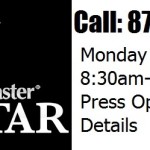What You Need To Know About Music License Agreements Before Signing

Synchronization is when your song is embedded into a media production of some kind. It is one of the exclusive rights that you have under copyright law. This can become a very important revenue stream for musicians so it is important that musicians understands the following seven components about music licenging agreements before singing them.
1) Value
Artists must be compensated monetarily, even if it’s a nominal amount. If you don’t true value in the license, just politely say no and move on.
2) Most Favored Nations
If another party who is connected to a license (e.g. another songwriter) and is paid more or given better terms, then their client will automatically receive the same benefit.
3) Scope of Use
The larger or broader the use, the more the artist should be compensated.
4) Term
Once the time limit is up, the licensor must pay an additional fee if they want to continue airing the commercial with your songs.
5) Exclusivity
The use of your content should be nonexclusive so it doesn’t prevent the artist from licensing the song for other uses. Make sure you watch out for this one because companies sometimes try to sneak it in so your track can’t be used in a competitor’s commercial.
6) Third Parties
Always make sure the licensor has tracked other third parties that are connected to your track.
7) PROs
This is important for an artist’s back end income. Make sure the licensor legally acknowldges that they are responsible for paying fees to the appropriate performing rights organizations (e.g. ASCAP and BMI).
Click here for additional information about music licensing agreements.



0 Comments